Edogawa Craft Stories

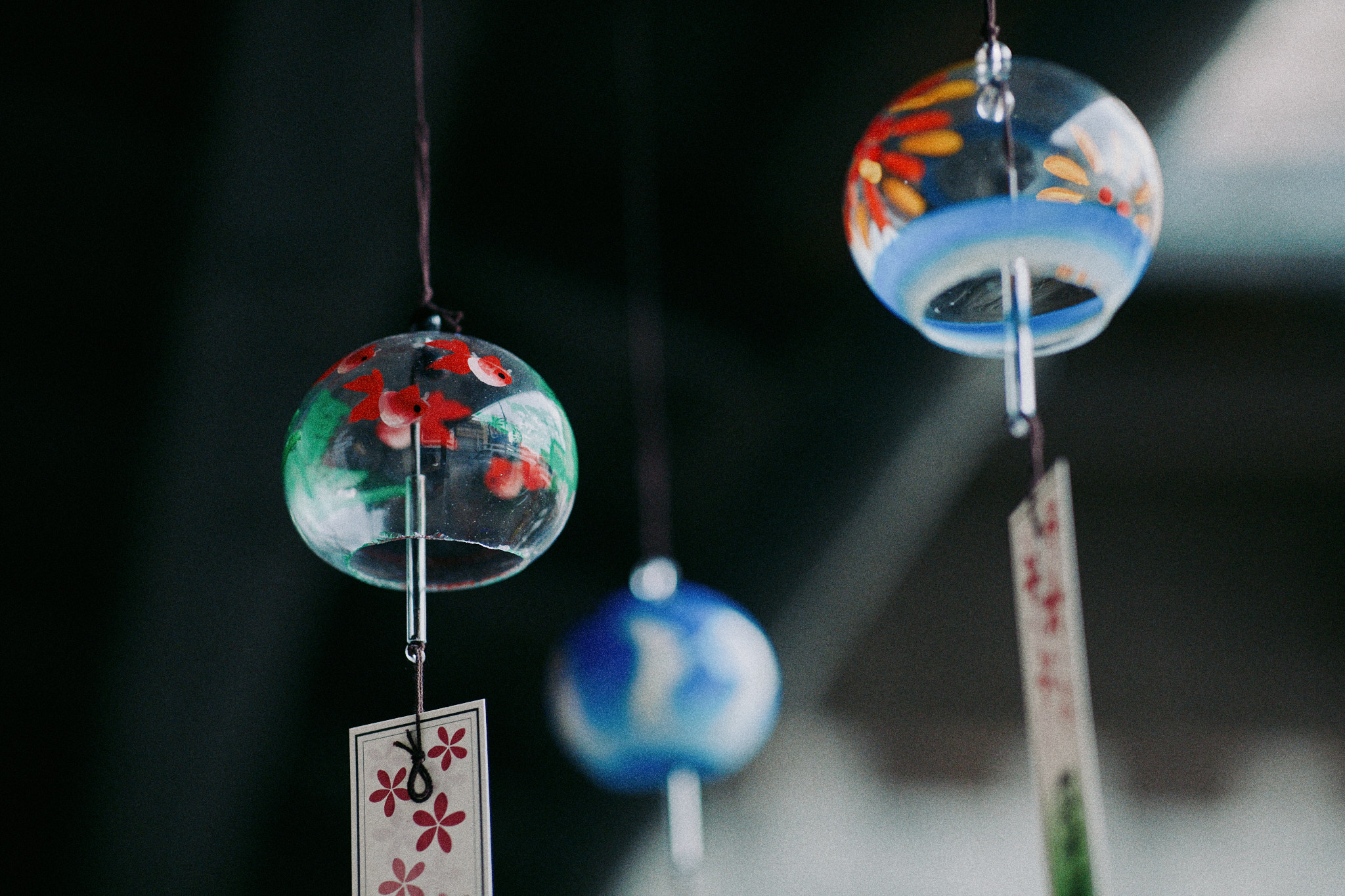
300 Years in the Edo Breeze: Preserving the Cool Chime of Furin through Tradition and Innovation
Shinohara Furin
Shinohara Emi and Yukari
Nestled in Minami Shinozakicho, Edogawa City, Shinohara Furin has been crafting wind chimes since the Taisho era. The second-generation craftsman, Shinohara Yoshiharu, named them “Edo furin” to honor the glass-blowing techniques passed down since the Edo period. Now in its fourth generation—descended from the founder Matahei—the Shinohara family and their apprentices continue to carry on these time-honored traditions.
Furin have a long history. Originating in ancient China, records show that bronze wind chimes were hung in Japan during the Heian and Kamakura periods as talismans to ward off evil. Glass furin appeared in the mid-Edo period, but were considered luxury items. It wasn’t until the second decade of the Meiji era, around the time of the first-generation Shinohara, that furin became more accessible, marking a parallel between the company’s journey and the popularization of their sound.
We were guided through the workshop by Shinohara Emi, the company’s current head. The process begins with melting glass in a furnace heated to over 1300°C. A molten, candy-like glob of red-hot glass is gathered onto a long glass pipe called a tomosao, then blown and shaped while rotating the pipe—a method known as chubuki (free-blowing). This technique, unchanged for over 300 years, is still done entirely by hand.
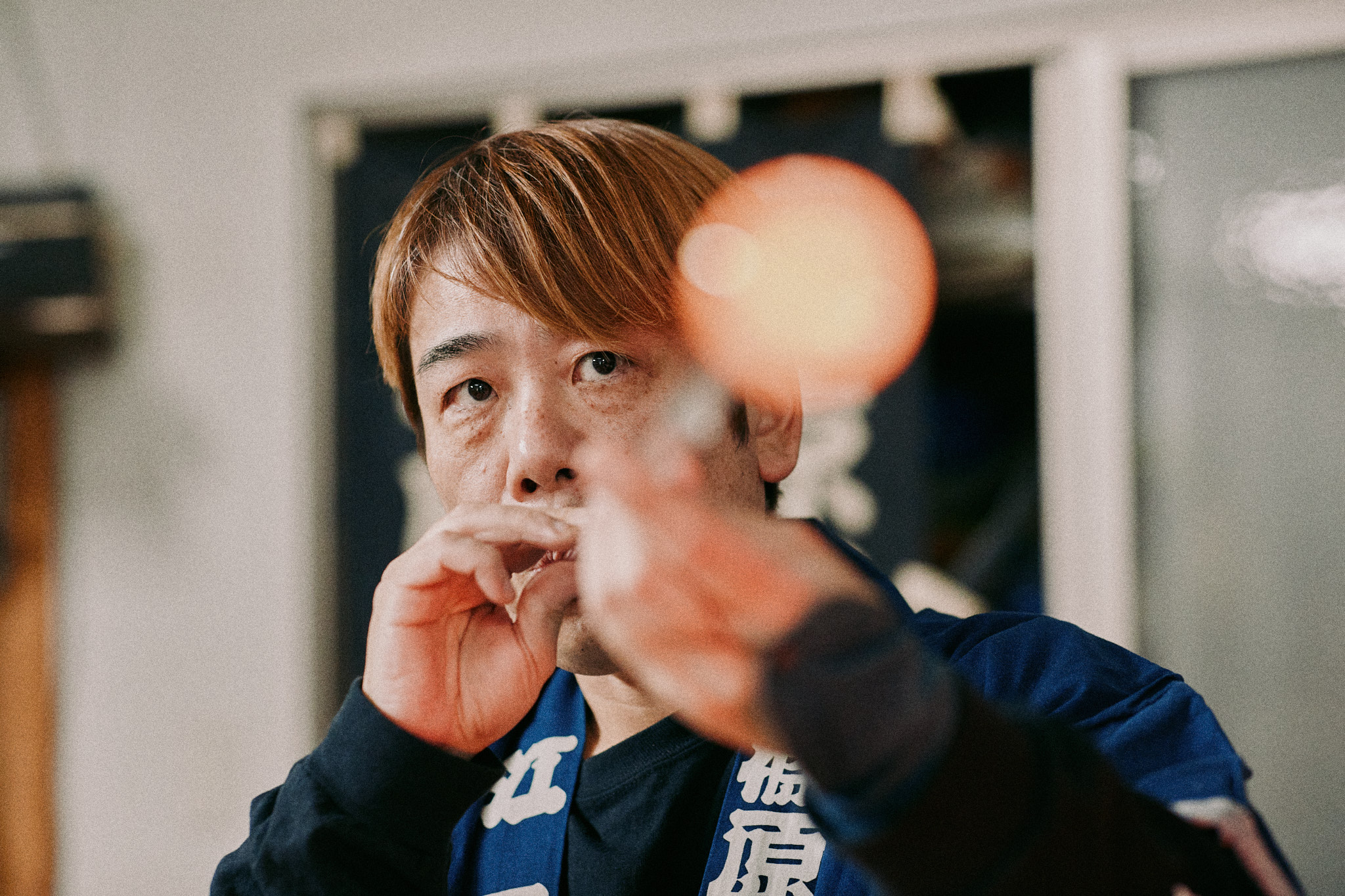
“It may look easy,” says Emi, “but shaping a perfect sphere in just 1–2 minutes before the glass cools is incredibly difficult.”
After cooling for about 10 minutes, the mouth of the glass sphere is cut and sanded. Leaving a slightly jagged edge—called the nariguchi (sounding lip)—helps create a clear, resonant sound when the clapper brushes against it. That distinct tone is the hallmark of Edo furin.
“Each one is shaped by hand without molds, so the thickness and size vary slightly, creating unique tones for every chime. Part of the fun is choosing the sound that feels right to you.”
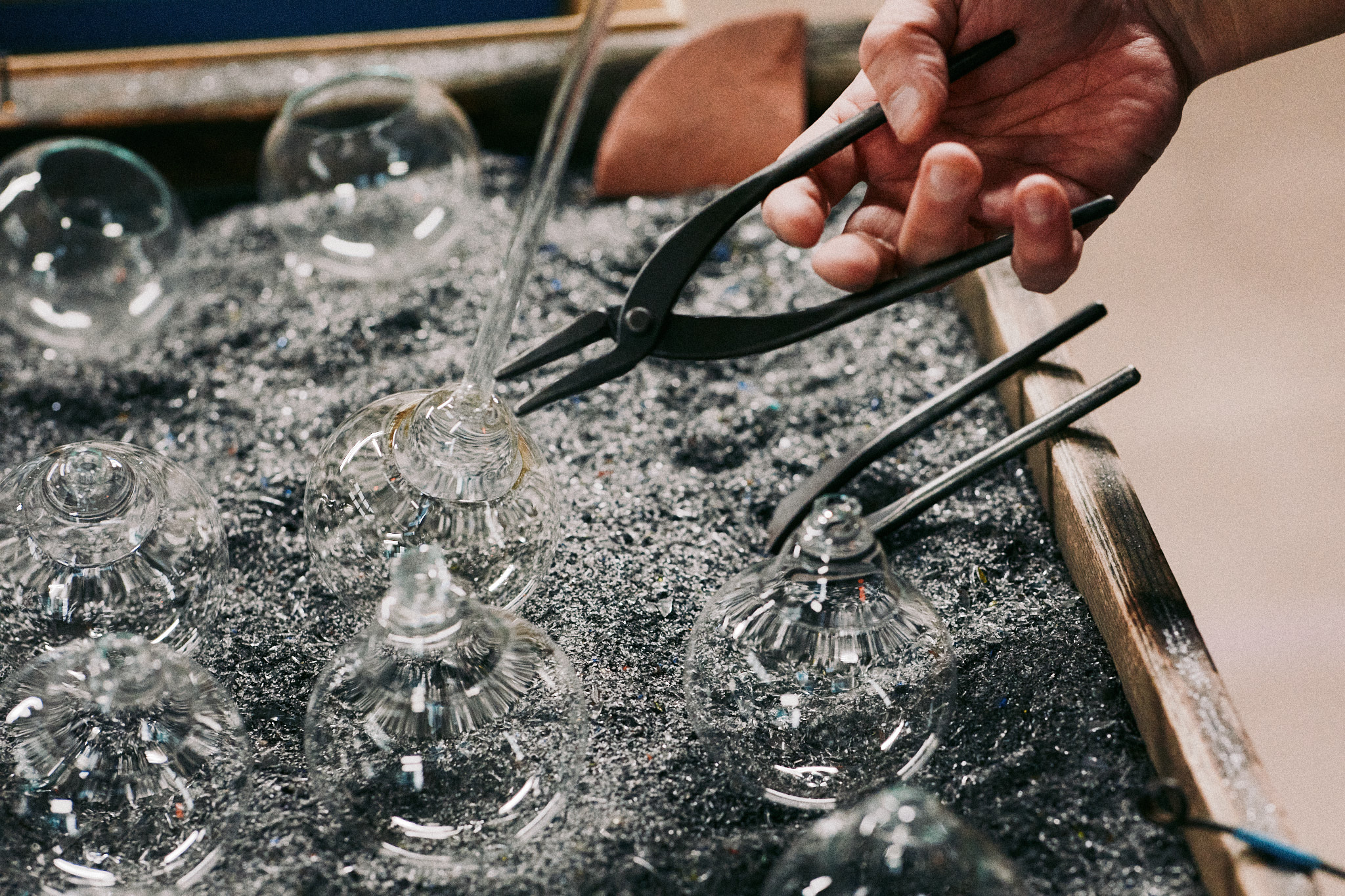
Freshly made glass globes. Still glowing orange from the heat, they’re snipped from the tomosao and placed on a bed of coke dust to cool.
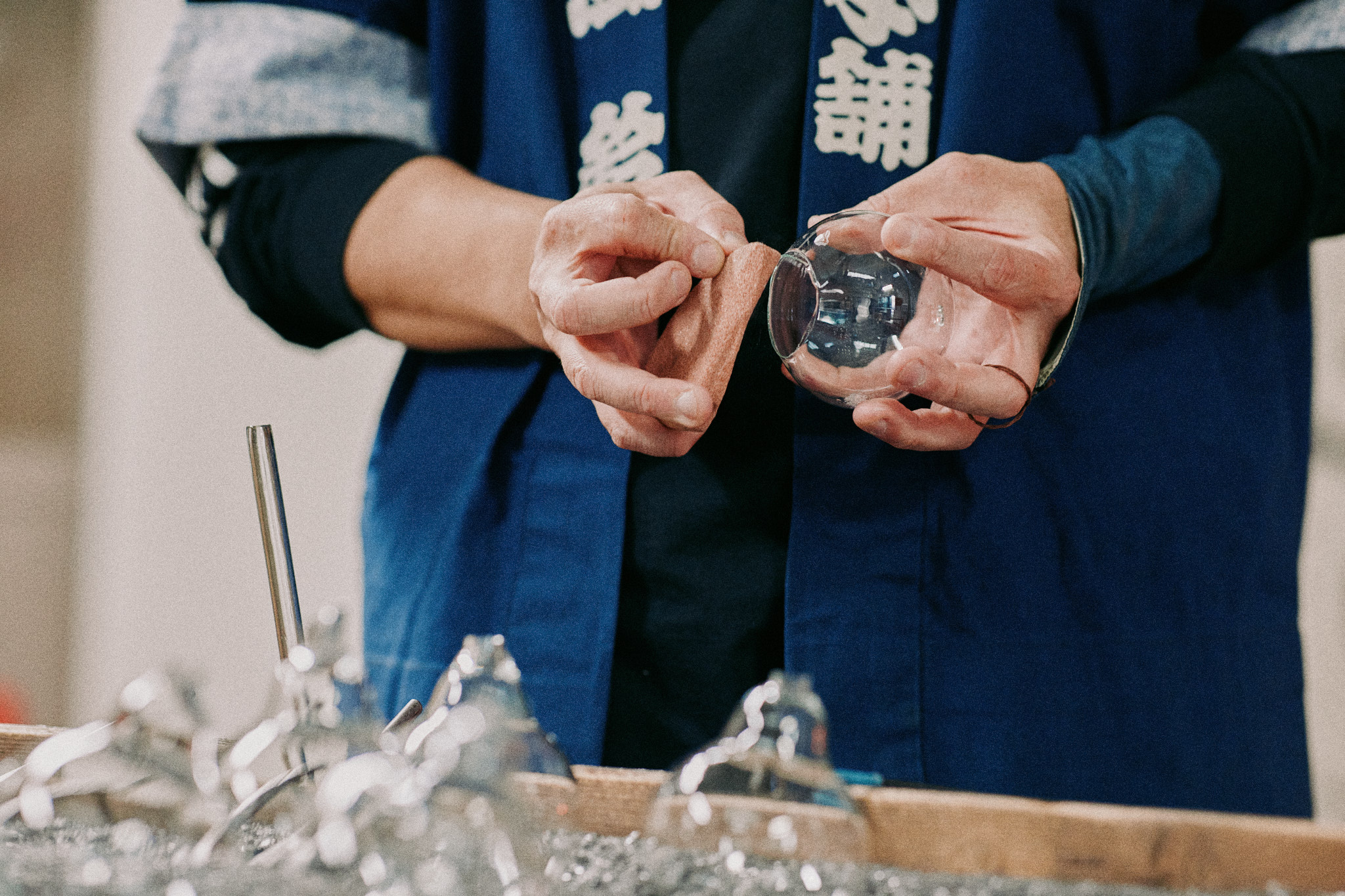
Whether cutting the glass or sanding it, even the slightest misstep can shatter the piece. It takes experience and skill to create the perfect nariguchi—safe to touch and pleasant to hear.
Once the glass body is complete, it’s time for etsuke, the hand-painting process. What makes Edo furin special is that designs are painted from the inside, requiring careful layering of colors in reverse order to ensure clarity when viewed from the outside. Writing, of course, must be done in mirror script. Watching Emi and her daughter Yukari paint smoothly without a sketch is nothing short of mesmerizing.
Emi entered the world of furin after marrying the third-generation craftsman, the late Hiroshi.
“At first, I couldn’t do it well, but since I had married into the family, I was determined. I started with simple designs and gradually honed my brushwork by painting many pieces.”
Yukari, on the other hand, picked up the brush in elementary school to help out—but didn’t enjoy it at the time.
“Furin season is summer, so just when I wanted to play with friends, I had to help at home. I used to dream of a job with a 9-to-5 schedule and weekends off. But somewhere along the line, I started to feel that making furin might not be such a bad life after all.”
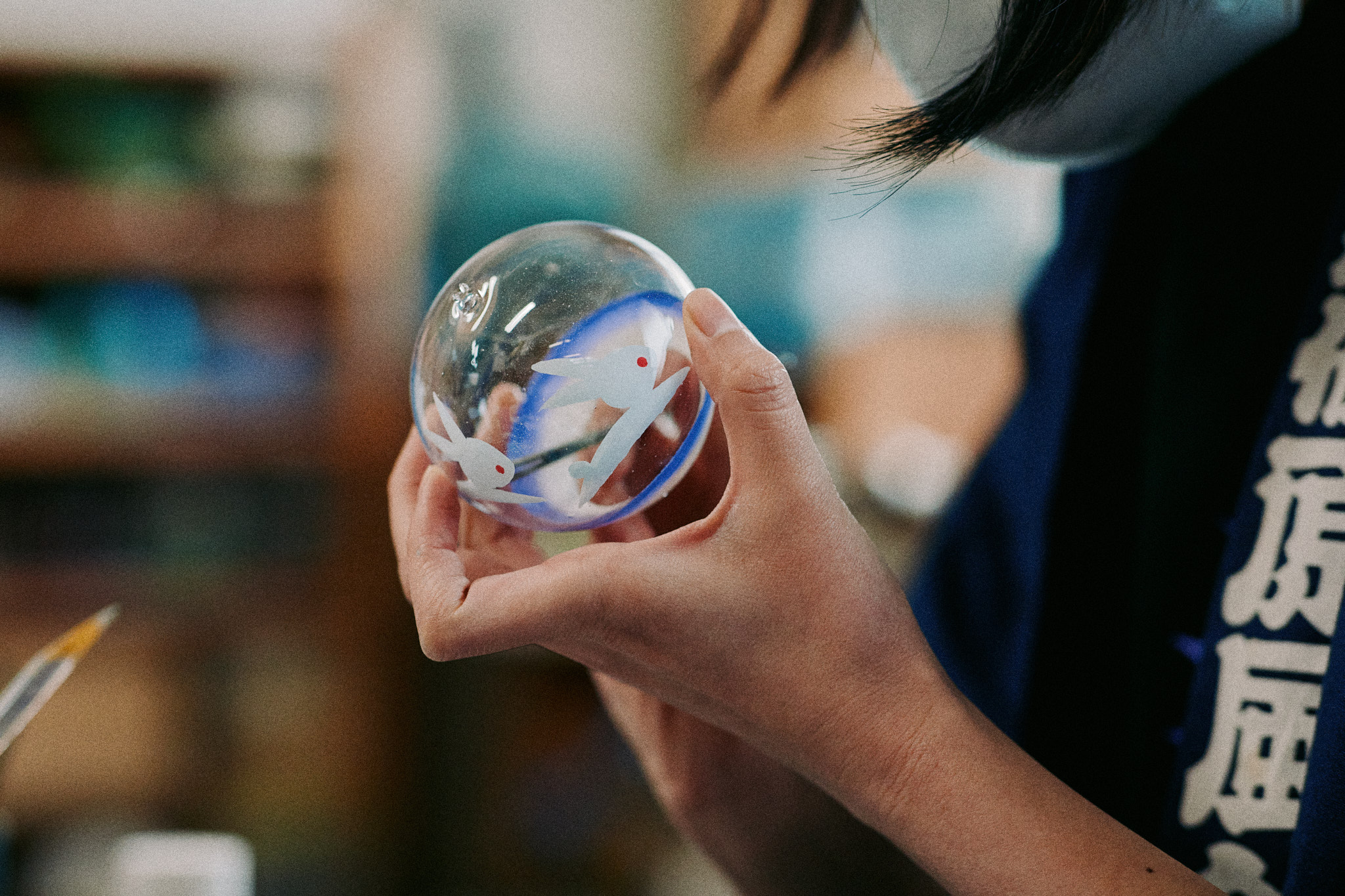
For the rabbit motif, Yukari first paints the red eyes, lets them dry, then adds the white body. “Seeing customers get excited at the rabbits they find cute brings home to me appreciate the beauty of handcrafted variation,” she says.
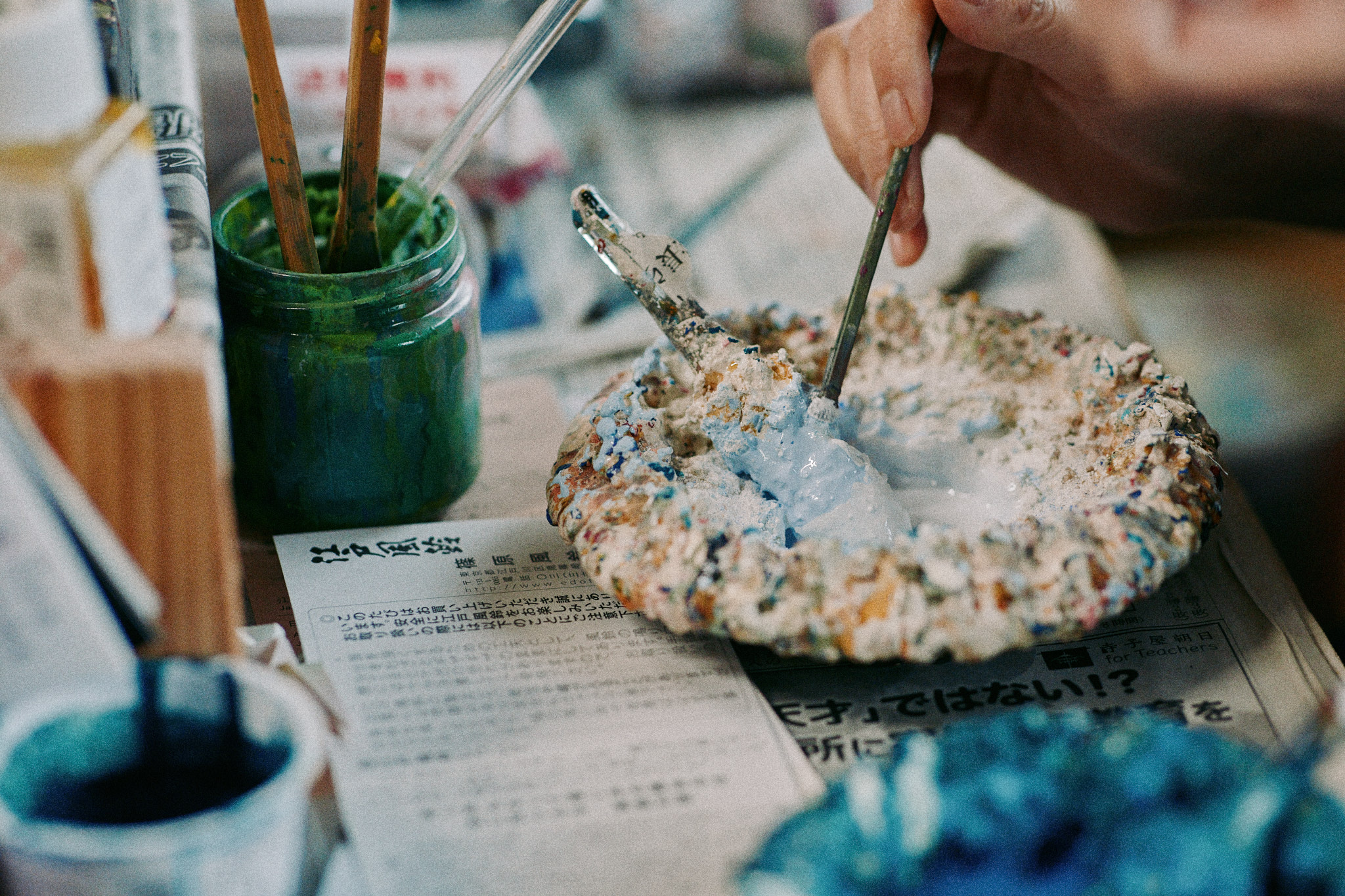
Paint trays with layers of dried pigment built up like layers of rock. Special paints that adhere to glass are used, and just mixing the desired colors is a task in itself.
The turning point for Yukari came during the COVID-19 pandemic in 2020.
“Department store events were canceled, and school field trip workshops dried up. For the first time in our history, we had to shut down the furnace during peak summer. That’s when I thought, ‘I don’t want to quit this.’ I realized I love furin. That moment solidified my resolve to keep the business going.”
That determination bore fruit in spring 2020 with the release of the Amabie furin design.
“Furin originally came from the idea of warding off evil with sound. In a time when ventilation and air circulation were being emphasized, I think the idea of a breeze carrying away bad luck paired well with the Amabie image. We were struggling then, so the flood of orders really felt like a lifeline,” Yukari reflects.
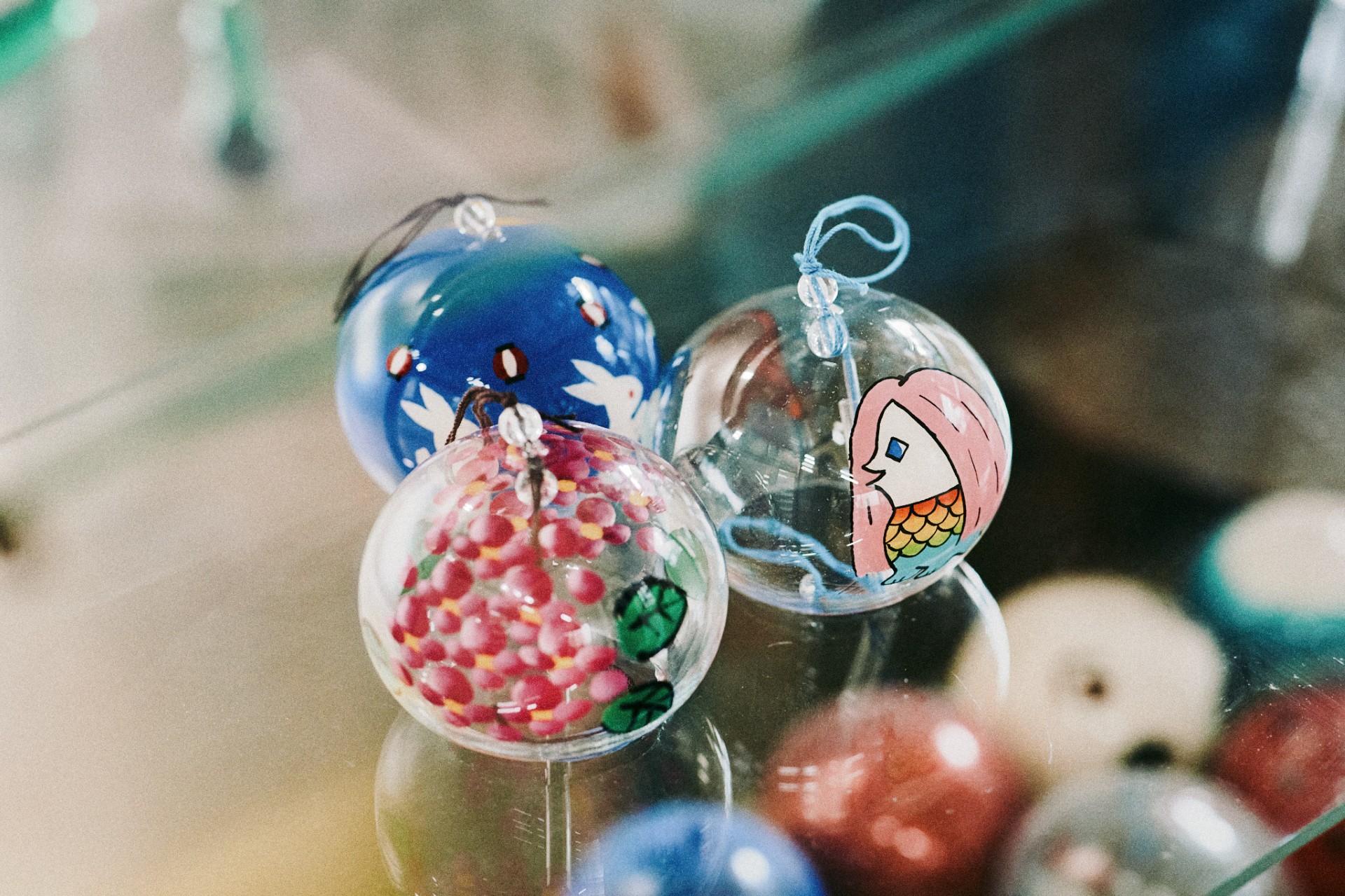
The Amabie wind chime on the right features a mythical creature said to ward off plague—a popular figure on social media during the COVID-19 pandemic. In a very real way, its protective charm seemed to bless the Shinohara family.
Furin come in a variety of shapes beyond the classic komaru (small sphere), including the slightly larger chumaru (medium sphere) and omaru (large sphere), a two-tiered hyotan (gourd shape), and the bell-like shinsui. While the chubuki technique limits the range of forms that can be made, as the Amabie design shows, the artwork painted onto each one evolves with the times.
“Summer motifs like morning glories and goldfish are staples, but when we added lucky charms like maneki-neko (beckoning cat) and daruma dolls, they found a devoted following,” says Emi. “We often get customer requests like ‘Don’t you have this design?’ Fulfilling those wishes expands what furin can be, so we’re always eager to try new patterns.”
In 2021, the shop collaborated with the hit anime Demon Slayer to create the Rengoku-ke Furin (Rengoku Family Furin). The sound of Shinohara Furin was used in the show, which brought huge attention. “Fans were excited to hear, ‘That’s the same furin from the anime!’” says Yukari. “It made people feel a personal connection to the wind chime, which was really gratifying.”
Unveiling new designs at the annual Edogawa Traditional Crafts Exhibition has also become a source of creative energy for the pair. “We want people to say, ‘I’ve never seen a furin like this before.’ That kind of delight is what drives us as craftspeople,” Emi explains.
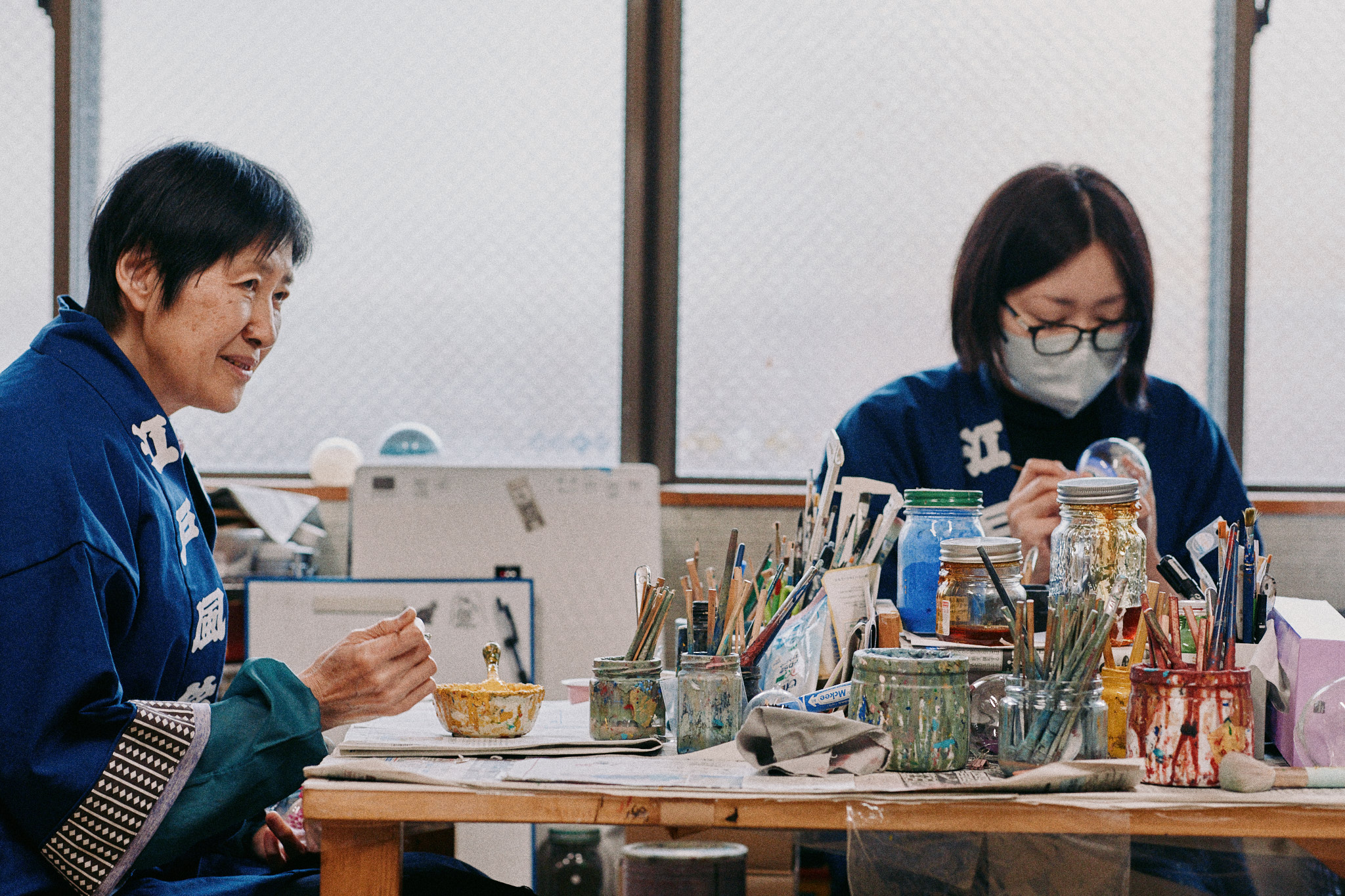
In the painting studio, Emi (left) and Yukari (right) work side by side. The table is covered in countless brushes, each chosen according to color and detail needed for delicate patterns.
While fully committed to the art of making, Yukari also speaks frankly about the challenges of selling. “Crafting alone isn’t enough. We have to constantly think about how to reach people, and how to bring them joy.”
In densely populated modern neighborhoods, the sound of furin, a once cherished summer tradition, can sometimes be considered unwanted noise. To address this, they created an original tabletop stand so furin can be enjoyed indoors. As a result, more and more customers now place multiple chimes together as part of their interior decor.
“Maybe wind chimes aren’t essential to daily life,” Emi muses. “But I think hearing a beautiful sound gives your heart just a little more room to breathe.” Having furin around invites a moment of calm, a way to sense the seasons. That, too, may be part of their enduring appeal.
Every July, Asakusa’s Hozuki Ichi (Chinese lantern plant fair) at Sensoji Temple offers potted hozuki decorated with wind chimes. Shinohara Furin has been based in Edogawa City for around 50 years—a convenient location, historically surrounded by hozuki growers and suppliers of furin materials.
Although the number of related businesses has decreased, Emi believes Edogawa’s thriving craft culture remains a strong point.
“There are still many small and large workshops in the area. Locals seem to understand and embrace craftsmanship—even when it involves noisy processes.”
The city also supports educational visits, where elementary students observe the furin-making process.
Yukari notes this has a lasting impact. “We’ve had adults come in and say, ‘I saw this as a kid—and now I’ve brought my child to see it too.’”
One of those children was craftsman Otsuki Kenichi, who demonstrated chubuki for us earlier. He chose this path after visiting the workshop on a school field trip. This kind of warm community connection plays a major role in sustaining traditional crafts into the future.

The Usagi no Bon Odori (Rabbit Bon Festival Dance) pattern in the center was created in collaboration with art university students through Edogawa’s design project, aimed at crafting traditional items that fit modern lifestyles
Finally, we asked Emi and Yukari about their dreams for the future.
“It’s been 300 years since glass wind chimes first appeared in the Edo period,” says Emi. “I hope we can keep making them for another 300 or 400 years. To do that, we need to preserve the complex techniques and the beauty of the sound—but it’s also important not to just do the same things over and over. We have to keep adapting with the times.”
Yukari nods in agreement to her mother Emi’s words.
“My grandfather, the second-generation craftsman, used to quote the president of Toraya, the wagashi (Japanese sweets) maker: ‘An old shop must always be at the forefront.’ Our field doesn’t even have an ‘industry,’ and there are only two families, including us, making Edo furin. It’s not big enough to be officially recognized as a traditional craft by the government, but that gives us the freedom to try new things. We want to keep creating one-of-a-kind furin that only we can make—responding to what people wish existed.”
Without fear of change, blending tradition with innovation—the journey of Shinohara Furin is set to continue.
Writing: Kiuchi Aki
Photos: Sakuma Akira
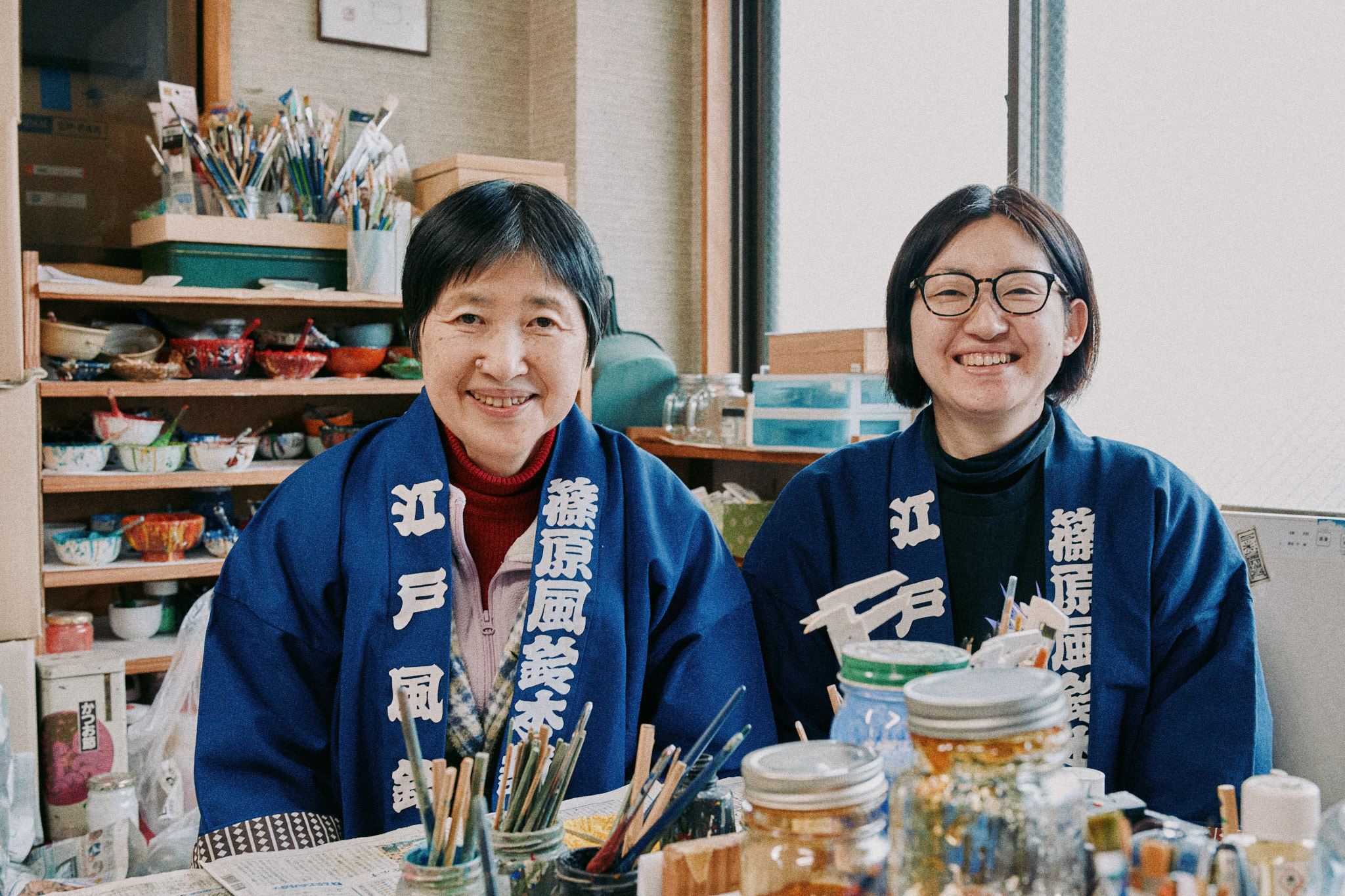
Introduction of the Artisan
Shinohara Furin was founded in 1915 by the first-generation craftsman Shinohara Matahei, who began training in wind-chime making at the age of 15. Originally located in Torigoe, Tokyo’s Taito City, the factory moved to Mukojima and Oshiage before finally establishing itself in Edogawa City in 1964. The same year, second-generation Shinohara Yoshiharu named the wind chimes made in Tokyo “Edo Furin.” Today, the company continues to produce and sell handmade glass wind chimes and offers glassblowing and painting workshops (reservations required).
・Shinohara Furin
・4-22-5 Minami Shinozakicho, Edogawa-ku, Tokyo

